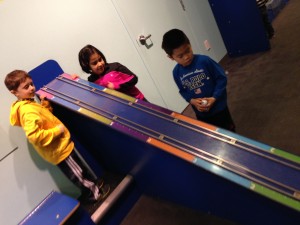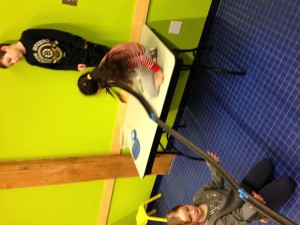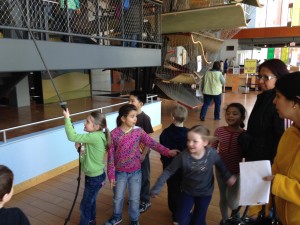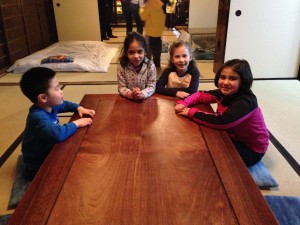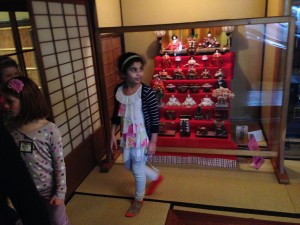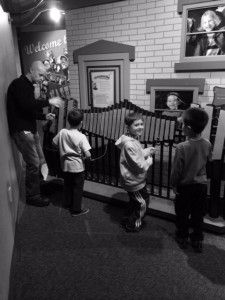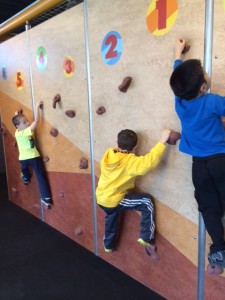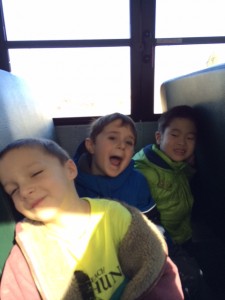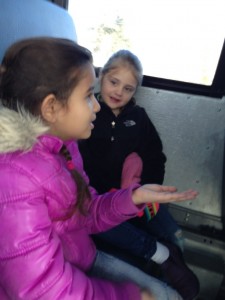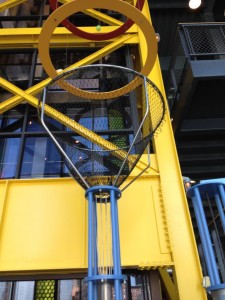Posted by kavery508 | Posted in Uncategorized | Posted on March 10, 2014
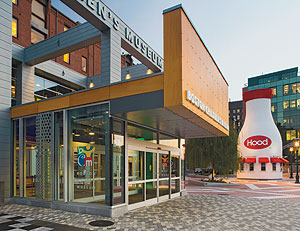 Our trip to the museum was awesome! Students applied their knowledge of science skills and concepts around motion, including speed, friction, and momentum. They also spent the afternoon exploring the many offerings the museum presented. In all aspects, the kids were engaged, polite, and responsible representatives of our school! Kudos to them, and thanks to you for dropping your child off early and prepared. It made a big difference! Thanks also to out to our parents who came and helped make the day a success: Archana Mudbidri, Sarah Hansen, Bethany Pyro, Sean Weafer, and Terry Habib.
Our trip to the museum was awesome! Students applied their knowledge of science skills and concepts around motion, including speed, friction, and momentum. They also spent the afternoon exploring the many offerings the museum presented. In all aspects, the kids were engaged, polite, and responsible representatives of our school! Kudos to them, and thanks to you for dropping your child off early and prepared. It made a big difference! Thanks also to out to our parents who came and helped make the day a success: Archana Mudbidri, Sarah Hansen, Bethany Pyro, Sean Weafer, and Terry Habib.
 We continue to teach and practice the comprehension strategy of Predicting when reading text. As we read Flat Stanley (Brown), students are learning to pause as events unfold to become aware of how our “reading brains” constantly anticipate what is coming next, along with the clues (evidence) that lead us there. As we get better at analyzing text this way, so too we get better at making predictions that are accurate and reasonable, thus improving our understanding of the important points of texts. Try it at home when you’re reading aloud!
We continue to teach and practice the comprehension strategy of Predicting when reading text. As we read Flat Stanley (Brown), students are learning to pause as events unfold to become aware of how our “reading brains” constantly anticipate what is coming next, along with the clues (evidence) that lead us there. As we get better at analyzing text this way, so too we get better at making predictions that are accurate and reasonable, thus improving our understanding of the important points of texts. Try it at home when you’re reading aloud!
 Today we start unit 7 in Everyday Math. The focus is primarily on learning plane, or 2-D geometry. We will learn to identify shapes by their properties, compare and contrast them, learn to recognize them as fractions (e.g. a trapezoid is 1/2 a hexagon; a triangle is 1/6 of the same, etc.) and more. To start, we’ll be learning attributes of shapes and how to compare and contrast them. Here’s a home activity that’s similar: http://www.mathsisfun.com/activity/shapes-sorting.html
Today we start unit 7 in Everyday Math. The focus is primarily on learning plane, or 2-D geometry. We will learn to identify shapes by their properties, compare and contrast them, learn to recognize them as fractions (e.g. a trapezoid is 1/2 a hexagon; a triangle is 1/6 of the same, etc.) and more. To start, we’ll be learning attributes of shapes and how to compare and contrast them. Here’s a home activity that’s similar: http://www.mathsisfun.com/activity/shapes-sorting.html
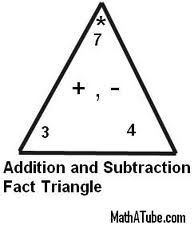 And here’s a game to keep up those math facts! https://em-facts-workshop.everydaymathonline.com/te_main_menu.html?PHPSESSID=269f6a4c5d0fdb98b9d851546d6d5589
And here’s a game to keep up those math facts! https://em-facts-workshop.everydaymathonline.com/te_main_menu.html?PHPSESSID=269f6a4c5d0fdb98b9d851546d6d5589
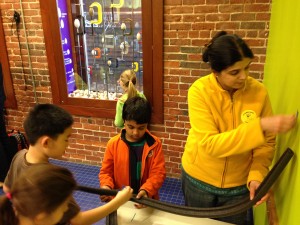 This week we will apply science and writing skills as we tell about our roller coaster constructions in
This week we will apply science and writing skills as we tell about our roller coaster constructions in
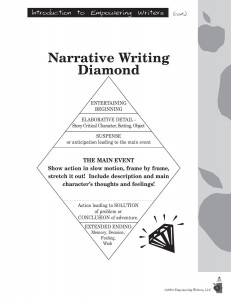 the form of a main event, with actions and observations that stretch out one moment of time and put the reader in the picture with us! Our stories will incorporate scientific vocabulary as well as elements of good storytelling (description, logical order of actions, etc.).
the form of a main event, with actions and observations that stretch out one moment of time and put the reader in the picture with us! Our stories will incorporate scientific vocabulary as well as elements of good storytelling (description, logical order of actions, etc.).

